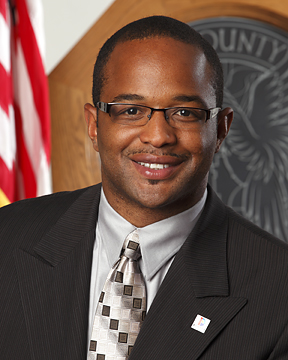Electeds Heading to San Fran With Eyes on Vision Zero

Once a year the Downtown Denver Partnership leads a group of decision makers to another city, hoping the change of pace will lead to a change of place in Denver. The hope is that seeing how other cities do things will demystify big ideas and give leaders an appetite to try them here. It’s a sort of field trip for influential people.
This year’s trip, dubbed “Urban Exploration,” is to San Francisco and started today. At least two City Council members left with urban transportation issues on their agenda. Vision Zero, the 16th Street Mall, and restructuring the transportation department are some of those big-ticket items.
“I’m an urbanist, so any time I have a chance to go and get out of my context and learn, I’m for it,” said City Council Member Albus Brooks. “I see it as a huge value and I think we learn much better when we look at the ways leaders are handling issues in their city and compare it to ours.”

Brooks and City Council Member Robin Kniech said they’ll talk to their counterparts about Vision Zero, the goal to eliminate all traffic deaths, adopted by San Francisco last year.
“I’m very interested in the ideas of pedestrian safety, especially at intersections,” Kniech said, “and Vision Zero seems compatible with that. We’re like San Francisco in that we can’t build out anymore… San Francisco is dense and Denver is growing, so how can we learn from them?”
San Francisco’s path toward Vision Zero isn’t exactly a smashing success yet. A report released a year after its adoption showed a huge gap between verbal commitment and action, but if it’s adopted in Denver, perhaps the Mile High City can learn from San Francisco’s mistakes as well as its successes — and leapfrog it.
Brooks, Kniech, and others interested in adopting Vision Zero should also look to last year’s Urban Exchange destination — Seattle. That city formally adopted a Vision Zero strategy in February and has been making rapid progress on street redesigns like protected bike lanes, transit lanes, and road diets. Last week Seattle announced it would seek to lower the speed limit to 20 mph on all residential streets.

Elevating Denver’s Transportation Department
Brooks went on that trip to Seattle. He came home wondering why Denver’s transportation department is part of the Department of Public Works, and not its own entity, like it is there. The city had recently split the two, Brooks said, giving transportation a “larger profile so they could make transportation a priority.” The result has been a generally quicker and more efficient implementation of projects.
He hopes he can make some more headway on that idea by speaking with leaders in San Francisco.
“It’s always about studying and studying and studying something different, then coming back home, playing with it a little bit, and then selling it to the powers that be,” Brooks said. “As much as I ‘d like to control some of the agencies, I’m part of the legislative branch, and my influence is with the budget.”
Mayor Michael Hancock, Department of Public Works Director Jose Cornejo, and City Engineer Leslie Thomas are the people who’d need to sign on to make the change happen, Brooks said.
Reinventing the 16th Street Mall
Aylene McCallum, one of the trip’s organizers, will lead the group on various excursions, including one to Market Street, which she bills as San Francisco’s 16th Street Mall.
“They are several years ahead of us in trying to better manage the multi-modal corridor and activate its sidewalks, and their efforts should be very insightful to our own on the 16th Street Mall,” McCallum said. “San Francisco also has a great tradition of piloting projects and we hope to learn more about how their public works and planning departments implement them.”
Sometimes people come home from these trips with a precise idea, like a policy or an example of a really good, multimodal street. But other times participants come home generally influenced by another urban environment, Kniech said. Whatever the outcome, it’s meant to be tangible.
“Our participants are civic leaders — whether on the public side or private side — and they are very knowledgeable about our visions for downtown Denver, financing options for projects, new technology, and emerging urban trends,” McCallum said. “They listen to what our presenters say, they ask a lot of questions, and compare that information to what they know about Denver.
“There’s a strong expectation to make something happen out of what we have learned in other cities.”


